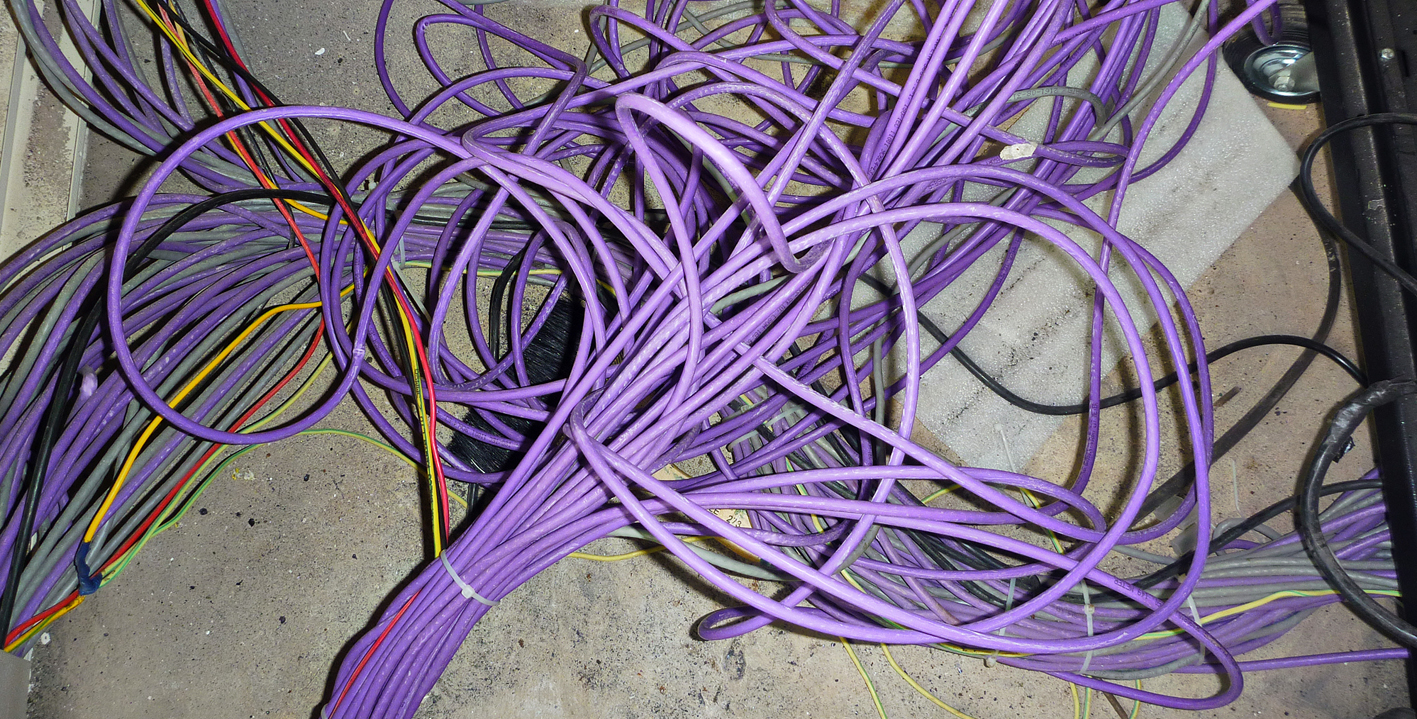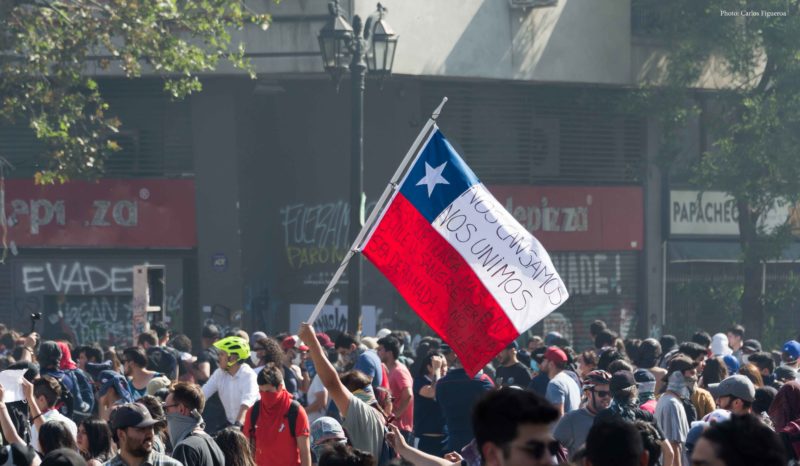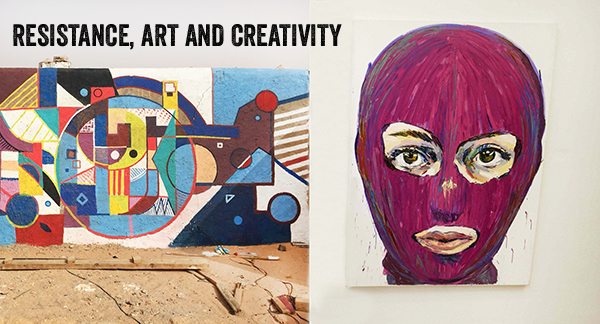
How can information and communication technology (ICT) contribute to development and to achieve the Sustainable Development Goals (SDGs)? And how can a mobile phone be used to find a lost goat? This was the focus for the last Global Bar of 2015.
In September, the UN and the member states adopted the Sustainable Development Goals, the Global Goals. The on-going development of information and communication technologies plays an important role in order for the goals to be achieved. A growing proportion of the world population is currently online, and in Africa in particular, new and innovative solutions are being created with the help of new technology. Despite this, the digital divide remains enormous.
Both the opportunities and the risks associated with the rapid technological developments in ICT was the focus of this edition of Global Bar, which was organised within the framework of the European Year of Development (#EYD2015) and in cooperation with iHub Research in Nairobi.
The panellists were Kerstin Borglin, director of Spider Centre, John Paul Karijo, social entrepreneur and Community Manager at iHub, Mats Andersson, Chairman of Forsway Lth, Abdi Hakim Ainte, consultant and IT expert from the company Translink (Mogadishu) and Mats Pellbäck Scharp, head of environment, health and safety at Ericsson, co-writer of the Ericsson-Earth Institute report “How ICT can achieve the SDGs” with additional comments from Petter Bolme. The moderator was David Isaksson.
David Isaksson started off this Global Bar by introducing the panellists, Kerstin Borglin was the first one out. She has worked a lot in eastern Africa and previously worked at Ericsson.
”Everybody knows that we are now connected. But I think that we understand less now compared to when we had the fixed network. People are not aware of the enormous possibilities or the risks. We talk about it but I think that few can grasp it on the individual level. In the way Internet and our smart phones work today it’s fun to use them, but not as fun to think about how they use us.”
Mats Pellbäck Scharp is one of the writers of the Ericsson-Earth Institute report “How Information and Communications Technology Can Achieve The Sustainable Development Goals?”, a joint research project with Columbia University.
”The main theme in this report is that we cannot achieve the SDGs without the use of ICT tools. Therefore ICT is the key driver for all the goals, and we work with all of them.”
On the question on which goal is his personal favorite, Mats Pellbäck Scharp answered goal number 6: “Ensure availability and sustainable management of water and sanitation for all”.
But what has ICT really to do with water?
“A lot! You can keep track of the water, you can use mobile money to pay for water locally and so on. We are now doing a project in Nairobi where it is possible to track water leakages and where private citizens can get paid to fix them”, said Mats Pellbäck Scharp.
John Paul Karijo joined the panel on a Skype connection from iHub in Nairobi, where he works as a community manager. iHub has been a driver in the development of the ICT movement in Kenya since 2011 and works as a community space as well as a vector for investors and innovators to create start-ups.
Kenya has been one of the main countries in the development of mobile banking, which has had an enormous importance in “banking the unbanked” and making bank services available in rural areas.
“M-pesa has enabled mobile payments for everyone but it has also helped transform the mental model. If somebody can make payments with their phone, they feel like they can use their phone in other ways, like accessing information and so on. “, said John Paul Karijo.
iHub provides support to African innovation created to solve problems in the developing world – and they do this in a sustainable way.
“There are things you can do with technology that can breach gaps in society and in governance. Out of the 17 development goals we have start-ups that are working with 10 of them”, said John Paul Karijo.
Abdi Hakim Ainte is a consultant and IT expert from the company Translink based in Mogadishu. Abdi himself commutes between Mogadishu and Stockholm – something that few would think is possible. But for a country that basically hasn’t had a state in almost 25 years, Somalia is well connected. ICT has been used as an alternative coping mechanism when the state doesn’t deliver services to the citizens.
“Recently we have carried out research on the role of ICT in peace building and it turned out that ICT plays a huge role in promoting peace and good governance. ICT has a big impact on the ground. One of Somalia’s challenges is that the private sector has outweighed the government, but this sector has also promoted this type of technology on the ground to fill the vacuum of the state.”, said Abdi Hakim Ainte.
But how much can you trust goverments in their use of ICT?
Petter Bolme, journalist and a Global Reporting staff member, currently living in Tanzania, highlighted a worrying development in Tanzania. Prior to the recent election, Tanzania approved a cyber crime law that was by many seen as a way to impose limits on freedom of expression. The law was then used by the government to crack down on the oppositions polling center, leading to the arrest of several persons. Now, if you share images of people who forgot to wear clothes, or if you share lies on social media, or commit other acts deemed to be criminal, you could end up spending 10 years in jail.
Mats Andersson works at the small company Forsway Lth that is based in Skövde. Forsway started as a spinoff from Nokia when they decided to stop producing satellite TV since they made more money on their mobile phones. Forsway came up with a low cost innovation that enables you to connect to the Internet through satellite TV technology – a parabola. It’s easy, cheap and can potentially be delivered in only one week regardless of where in the world you are. Recently Forsway connected schools and community centres in 50 000 rural villages in India.
“I think that the Internet connection will increase the prosperity in these villages, where people won’t have to travel as much and they will get better health services. There is a big problem in many parts of the world that the qualified teachers move to the cities, but with good connection they can teach online.”, said Mats Andersson.
But is ICT mainly about development? Kerstin Borglin points in another direction:
“We have to be aware that being connected is not only about getting education and health service. People, even in the areas that aren’t that well connected, want to be entertained. That is also a way to finance the other parts “.
One of the projects that iHub has supported focused on educating children:
“We recently had a project where we educated children in the slum by using games, which proves that gadgets, things that look like all fun, can actually educate. It’s all about using ICT creatively, about how you use it to achieve your objective”, said John Paul Karijo.
Abdi Hakim Ainte found this interesting in relation to Somalia:
“70 % of the population is young, many use social media frequently. Somalia is one of the countries where illiteracy is continuously high, but people use the Internet anyway.“
According to Abdi Hakim Ainte this makes innovation even more prominent. He tells us about when he was traveling in a rural area in southern Somalia where he met a nomad to interview about ICT.
“He told me that he used to spray his phone number on his goats and his camel, so if he lost them somebody could call him and tell him “Hey, I found your goat”. That is very innovative!”
One person from the audience brings up the gender aspects of ICT. Although ICT is spreading across the world the digital gender gap persists. Women have less access to Internet and to mobile phones, as well as a smaller role in the innovation of ICT solutions.
What can people in the ICT movement do to breach this gap?
“I think it’s a matter of education, that girls should have the same opportunities as boys, that is the simple truth. Internet is just a tool, so it doesn’t matter how much Internet you have at home if you don’t have the same opportunities” said Kerstin Borglin.
John Paul Karijo has an example from one of the start-ups at iHub:
“We have a school exclusively for girls that want to learn how to code and most of them see themselves as coders first and then as girls. The programme is free, so you don’t have to come from a privileged background. And most of the students end up joining one of the start-ups.”.
One of the last questions, that concluded the last Global Bar in 2015, was about knowledge sharing. A problem in many developing countries is the brain drain, when educated people move abroad. That has made capacity building is an important part of the discussion around the global development goals.
So how can ICT be used to transfer the knowledge of the diaspora back to the home countries?
“ICT is in fact the only way to do that, to connect people in New York with countries in Africa or in south east Asia, if you have the right solution to make that happen“, said Mats Pellbäck Scharp. Abdi Hakim Ainte agreed and gave us an example from Somalia:
“The role of the diaspora is very important, especially in post-conflict countries. In Somalia, a large part of society is former diaspora, and we are in every sector, almost the entire cabinet of the government is diaspora. The amount of innovation they bring back is amazing, so that is one of the positive sides of the global community”.
See the whole discussion here.
Maxime Wallström
Intern, Global Reporting




